Order Anura Scientific name Centrolenidae Rank Family | Phylum Chordata Higher classification Neobatrachia | |
 | ||
Lower classifications | ||
Glass frogs crystals of the rainforest
The glass frogs (or glassfrogs) are frogs of the amphibian family Centrolenidae (order Anura). While the general background coloration of most glass frogs is primarily lime green, the abdominal skin of some members of this family is translucent. The internal viscera, including the heart, liver, and gastrointestinal tract, are visible through the skin, hence the common name.
Contents
- Glass frogs crystals of the rainforest
- The glass frog isn t made of glass but that would be pretty cool wired
- Taxonomy
- Classification
- Genera
- Characteristics
- Distribution
- Biology
- References
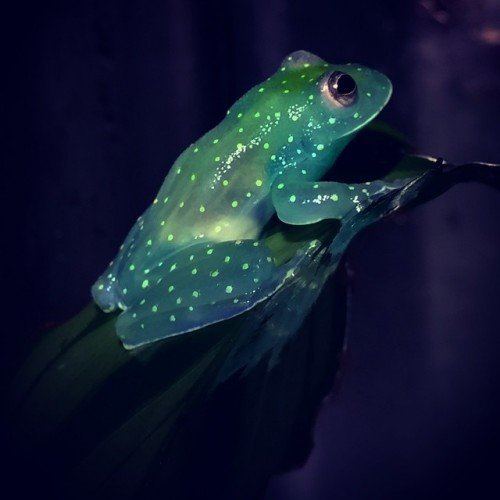
The glass frog isn t made of glass but that would be pretty cool wired
Taxonomy
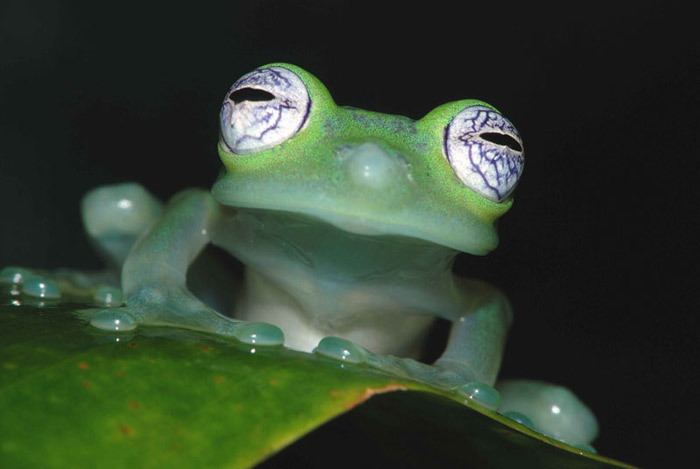
The first described species of Centrolenidae was the "giant" Centrolene geckoideum, named by Marcos Jiménez de la Espada in 1872, based on a specimen collected in northeastern Ecuador. Several species were described in subsequent years by different herpetologists (including G. A. Boulenger, G. K. Noble, and E. H. Taylor), but usually placed together with the tree frogs in the genera Hylella or Hyla.
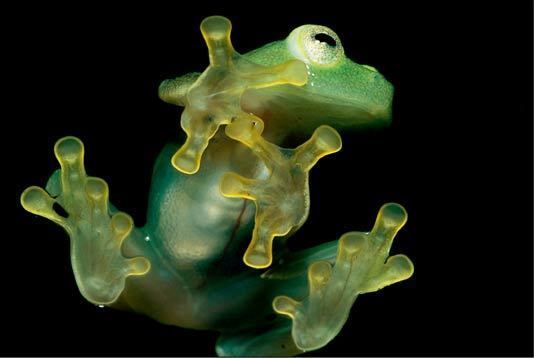
The family Centrolenidae was proposed by Edward H. Taylor in 1945. Between the 1950s and 1970s, most species of glass frogs were known from Central America, particularly from Costa Rica and Panama, where Taylor and Jay M. Savage extensively worked, and just a few species were known to occur in South America. In 1973, John D. Lynch and William E. Duellman published a large revision of the glass frogs from Ecuador, showing the species richness of Centrolenidae was particularly concentrated in the Andes. Later contributions by authors such as Juan Rivero, Savage, William Duellman, John D. Lynch, Pedro Ruiz-Carranza, and José Ayarzagüena increased the number of described taxa, especially from Central America, Venezuela, Colombia, Ecuador, and Peru.

The evolutionary relationships, biogeography, and character evolution of centrolenids were discussed by Guayasamin et al. (2008) Glass frogs originated in South America and dispersed multiple times into Central America. Character evolution seems to be complex, with multiple gains and/or losses of humeral spines, reduced hand webbing, and complete ventral transparency.
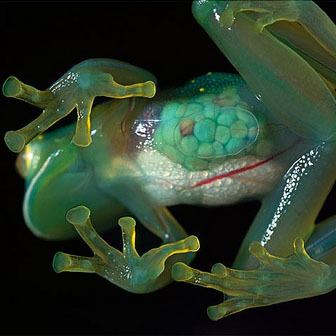
The taxonomical classification of the glass frogs has been problematic. In 1991, after a major revision of the species and taxonomic characters, the herpetologists Pedro Ruiz-Carranza and John D. Lynch published a proposal for a taxonomic classification of the Centrolenidae based on cladistic principles and defining monophyletic groups. That paper was the first of a series of contributions dealing with the glass frogs from Colombia that led them to describe almost 50 species of glass frogs. The genus Centrolene was proposed to include the species with a humeral spine in adult males, and the genus Hyalinobatrachium to include the species with a bulbous liver. However, they left a heterogeneous group of species in the genus Cochranella, defined just by lacking a humeral spine and a bulbous liver. Since the publication of the extensive revision of the Colombian glass frogs, several other publications have dealt with the glass frogs from Venezuela, Costa Rica, and Ecuador.

In 2006, the genus Nymphargus was erected for the species with basal webbing among outer fingers (part of the previous Cochranella ocellata species group).
Four genera (Centrolene, Cochranella, Hyalinobatrachium, Nymphargus) have been shown to be poly- or paraphyletic and recently a new taxonomy has been proposed (see below).
Classification
The family Centrolenidae is a clade of anurans. Previously, the family was considered closely related to the family Hylidae; however, recent phylogenetic studies have placed them (and their sister taxon, the family Allophrynidae) closer to the family Leptodactylidae.
The monophyly of Centrolenidae is supported by morphological and behavioral characters, including:1) presence of a dilated process on the medial side of the third metacarpal (an apparently unique synapomorphy); 2) ventral origin of the musculus flexor teres digiti III relative to the musculus transversi metacarpi I; 3) terminal phalanges T-shaped; 4) exotroph, lotic, burrower/fossorial tadpoles with a vermiform body and dorsal C-shaped eyes, that live buried within leaf packs in still or flowing water systems; and 5) eggs clutches deposited outside of water on vegetation or rocks above still or flowing water systems. Several molecular synapomorphies also support the monophyly of the clade.
The taxonomic classification of the Centrolenidae was recently modified. The family now contains two subfamilies and 12 genera.
Genera
Family CENTROLENIDAE
Incertae sedis Ikakogi Guayasamin, Castroviejo, Trueb, Ayarzagüena, Rada, Vilá, 2009
Characteristics
Glass frogs are generally small, ranging from 3 to 7.5 cm (1.2 to 3.0 in) in length. They are green in color over most of their bodies, save for the skin along the lower surface of the body, which is transparent.
Glass frogs are similar in appearance to some green frogs of the genus Eleutherodactylus and to some tree frogs of the family Hylidae. However, hylid tree frogs have eyes that face to the side, whilst those of glass frogs face forward. Some species of green tree frogs (especially juveniles), such as Hyloscirtus palmeri and Hypsiboas pellucens, have the transparent abdominal skin typical of glass frogs, but they also have calcars on the heels, a character not present in any species of the Centrolenidae.
Two members of the glass-frog family Centrolenidae (Centrolenella fleischmanni, C. prosoblepon) and the hylid subfamily Phyllomedusinae (Agalychnis moreletii, Pachymedusa dacnicolor) reflect near-infrared light (700 to 900 nanometers) when examined by infrared color photography. Infrared reflectance may confer adaptive advantage to these arboreal frogs both in thermoregulation and infrared cryptic coloration.
Distribution
The Centrolenidae are a diverse family, distributed from southern Mexico to Panama, and through the Andes from Venezuela and the island of Tobago to Bolivia, with some species in the Amazon and Orinoco River basins, the Guiana Shield region, southeastern Brazil, and northern Argentina.
Biology
Glass frogs are mostly arboreal. They live along rivers and streams during the breeding season, and are particularly diverse in montane cloud forests of Central and South America, although some species occur also in Amazon and Chocóan rainforest and semideciduous forests.
The eggs are usually deposited on the leaves of trees or shrubs hanging over the running water of mountain streams, creeks, and small rivers. One species leaves its eggs over stones close to waterfalls. The method of egg-laying on the leaf varies between species. The males usually call from leaves close to their egg clutches. These eggs are less vulnerable to predators than those laid within water, but are affected by the parasitic maggots of some fly species. As a result, some glass frogs show parental care. After they hatch, the tadpoles fall into the waters below. The tadpoles are elongated, with powerful tails and low fins, suited for fast-flowing water. Outside of the breeding season, some species live in the canopy.
